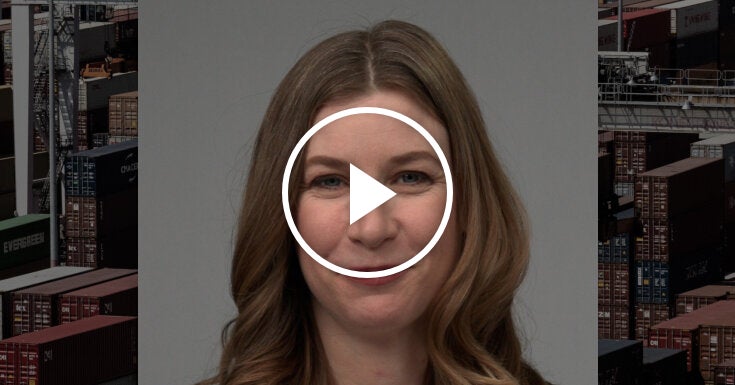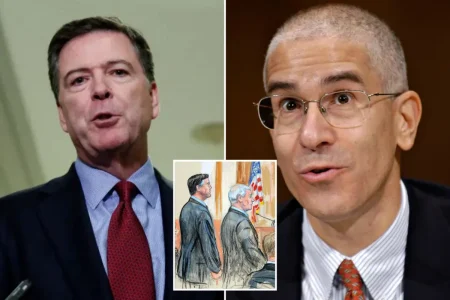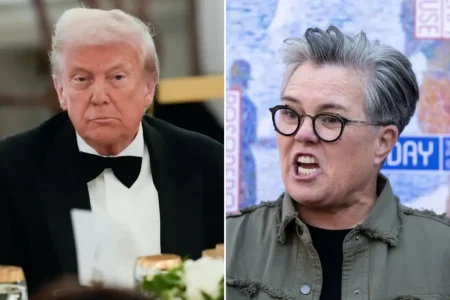President Donald Trump’s presidency has been marked by a unique reliance on a tool that’s been around for centuries—tariffs. His administration has often turned to this economic strategy, using it not only to tackle trade disputes but also to address broader, non-economic challenges like immigration and drug trafficking. So, what does this approach mean for the average American? Let’s unpack it together.
Tariffs, at their core, are taxes or duties imposed on imported goods. The idea is pretty straightforward: make foreign goods more expensive, so domestic products become more attractive. Under Trump’s leadership, however, this mechanism has evolved into a sort of Swiss Army knife, employed in various battles on the policy front. To better understand it, Ana Swanson, a journalist specializing in trade and international economics for The New York Times, offers valuable insights into the nuanced impact these tariffs could have on everyday life.
When talking about trade, Trump has been particularly focused on countries like China, which he has often accused of unfair practices, including intellectual property theft and currency manipulation. His administration’s solution? Set a series of tariffs on Chinese goods. On paper, this sounds like a patriotic effort to bolster American manufacturing and "teach China a lesson." But in practice, the ripple effects of such actions can be far-reaching and complex.
For one, tariffs tend to drive up prices for consumers. The reasoning is simple: If businesses importing goods from other countries have to pay extra taxes, they often pass those costs on to shoppers. So, whether you’re in the market for a new phone or a washing machine, you might feel the pinch in your wallet. And it’s not just big-ticket items—everyday goods, like food and clothing, can also become more expensive. Essentially, the financial burden trickles down, meaning households ultimately end up shouldering some of the cost.
Now, Trump’s use of tariffs didn’t stop at trade disputes. Here’s where it gets a little unconventional. In an effort to curb immigration from Mexico, the president even proposed imposing tariffs on Mexican goods unless the country took specific actions to prevent migrants from crossing into the U.S. Similarly, Trump floated the idea of leveraging tariffs to address the drug crisis, arguing that higher costs on imports, particularly from countries like China, might help suppress the flow of illicit substances like fentanyl.
At this point, you might be wondering: How can a single tool address such vastly different issues, from trade imbalances to immigration to drug trafficking? Critics have argued that tariffs are too blunt an instrument for these kinds of complex problems. While they might grab headlines and place pressure on foreign governments, the unintended consequences often cascade back into domestic markets. For instance, industries relying on imported materials could face disruptions. Take U.S. carmakers as an example: If tariffs make importing parts more expensive, those higher costs might either lead to downsized operations or be passed along to consumers in the form of pricier vehicles.
What’s central to this debate is the question of who ultimately pays the price for these policies. Trump has frequently claimed that foreign countries are footing the bill for the tariffs, yet economists widely agree that this is misleading. In reality, it’s U.S.-based importers who pay these duties—and by extension, you and me when we go to the store to buy something affected by these taxes. This doesn’t necessarily mean that Trump’s tariff strategies are a lost cause, but it does mean that their effectiveness and cost need to be carefully weighed.
Beyond consumer prices, there’s also the issue of retaliation from other countries. Tariffs are rarely a one-way street; when one country imposes them, others often retaliate with their own. For instance, after the U.S. rolled out substantial tariffs on Chinese goods, China responded in kind, targeting American agricultural products like soybeans. This created significant stress for U.S. farmers, many of whom rely heavily on international markets to sell their crops. Some received financial aid from the government to offset their losses, but for many, this barely covered the economic blow.
And then there’s the broader geopolitical picture. Trump’s reliance on tariffs has drawn criticism for straining relationships with longstanding allies. When he imposed tariffs on steel and aluminum imports, countries within the European Union and close trade partners like Canada didn’t take kindly to the move. For years, the United States had been a vocal proponent of free trade, often standing at the forefront of international agreements that sought to reduce trade barriers. This sudden pivot marked a dramatic shift in U.S. policy, raising questions about the long-term implications for global alliances.
But it’s not all doom and gloom. Supporters of Trump’s tariff approach believe this hardline stance is necessary to renegotiate trade deals that better serve American interests. They argue that previous administrations were too lenient, allowing countries like China to exploit global trade systems. In this view, short-term pain—for instance, higher prices or industry disruptions—is worth tolerating if it leads to long-term economic gains, such as more jobs in manufacturing or stronger protections for intellectual property.
Whether you’re nodding along in agreement or raising an eyebrow in skepticism, one thing is clear: tariffs under Trump’s administration have taken center stage in a way that hasn’t been seen in decades. They’ve become not just an economic tool, but a multi-purpose lever used to address a range of domestic and international issues.
For everyday Americans, the story of tariffs is a complicated one. On the one hand, they represent an effort to protect jobs and industries in the U.S., counter unfair practices abroad, and assert America’s position on issues like immigration and drug trafficking. On the other hand, their real-world consequences—higher prices, strained business operations, and potential fallout in global relations—underscore how interconnected the global economy truly is. It’s a delicate dance, and one that has no single or easy resolution.
In the end, President Trump’s reliance on tariffs highlights a broader shift in how policymakers approach economic and political challenges. Love it or hate it, the strategy has sparked crucial conversations about trade, fairness, and the balance of global power. How these tariffs will be judged in hindsight—whether as a bold step forward or a miscalculated gamble—remains to be seen. But one thing’s for sure: the ripple effects of these decisions will continue to shape the country and everyday life for years to come.









